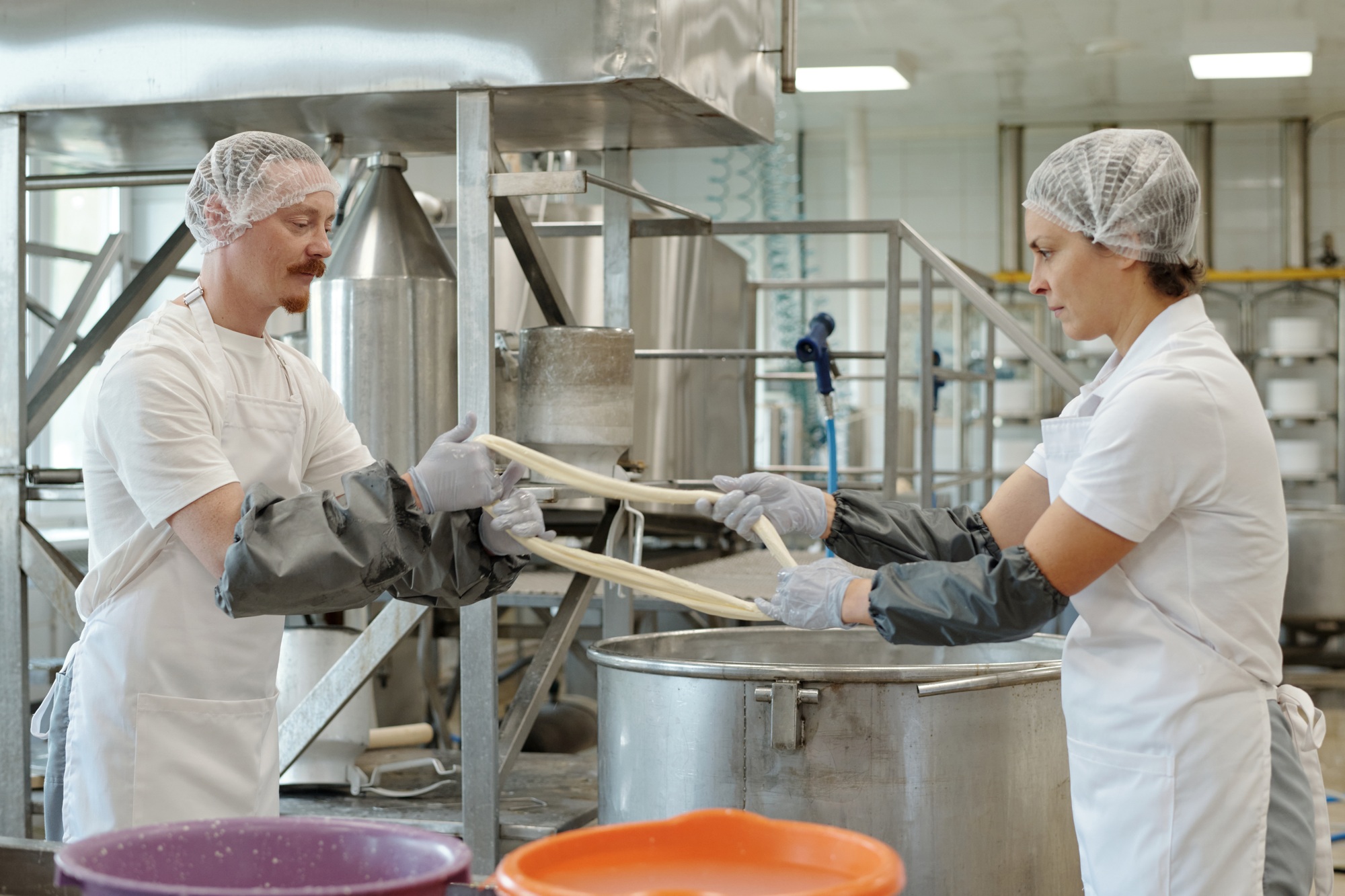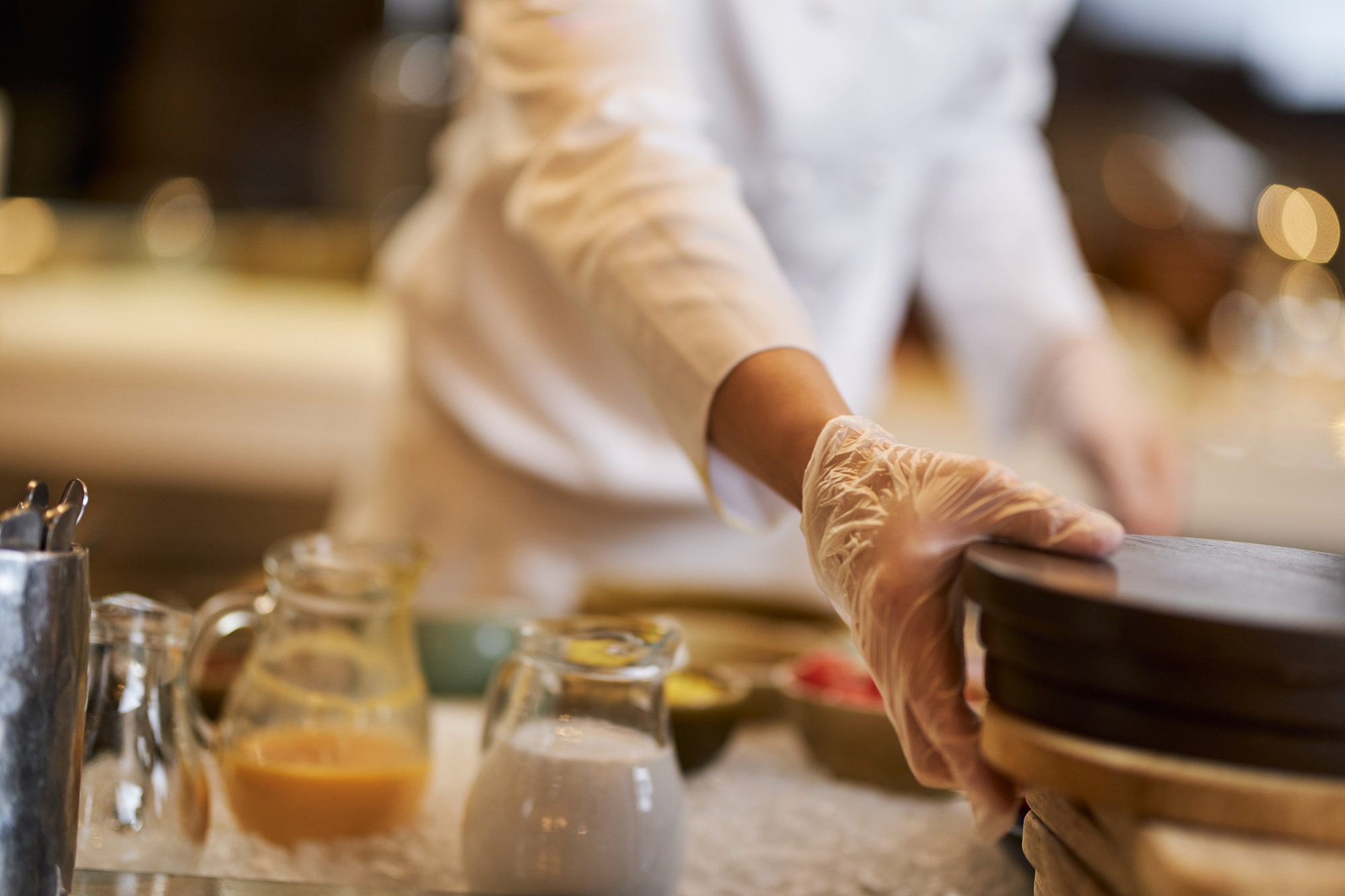Key Takeaways

- Understanding Ghost Kitchens: Ghost kitchens are delivery-only establishments that minimize overhead costs, offering a flexible and innovative approach to the food industry.
- Critical Steps for Launching: Key steps include conducting thorough market research, developing a solid business plan, choosing an efficient location, obtaining necessary licenses, and designing an optimized kitchen layout.
- Menu Creation and Marketing: Craft a focused menu that resonates with your target audience, and implement effective digital marketing strategies, including social media engagement and SEO, to boost brand visibility.
- Effective Collaboration: Partnering with food delivery apps enhances your ghost kitchen’s reach, and actively managing online profiles can attract more customers.
- Operational Efficiency: Streamline operations through effective staff management, precise inventory control, and a well-coordinated order fulfillment process to maintain quality and speed in service.
- Continuous Improvement: Regularly analyze customer feedback and sales data to adapt your menu and marketing strategies, ensuring ongoing growth and customer satisfaction.
In today’s fast-paced food industry, ghost kitchens are revolutionizing how you think about dining. These delivery-only establishments allow you to create a culinary brand without the overhead costs of a traditional restaurant. Whether you’re a seasoned chef or an aspiring entrepreneur, starting a ghost kitchen can be a game-changer for your business model.
How to Start a Ghost Kitchen

Starting a ghost kitchen involves several crucial steps. Follow these to establish your delivery-only culinary brand.
- Conduct Market Research
Investigate local demand and competitors within your chosen niche. Identify trending cuisines and consumer preferences. Gather data from food delivery platforms and social media insights to shape your menu offerings.
- Develop a Business Plan
Outline your concept clearly. Include your mission, target customer, marketing strategy, and financial projections. Assign budget estimates for equipment, ingredients, and licensing. Crafting a solid business plan increases the likelihood of success.
- Choose a Location
Select a strategic site that lowers overhead costs. Seek facilities that comply with health codes and have ample kitchen space. Consider proximity to your target customer base to optimize delivery efficiency.
- Obtain Necessary Licenses and Permits
Research local regulations for food businesses. Secure permits for food handling, business operation, and health inspections. Compliance with these regulations ensures legal operation and builds trust with customers.
- Design Your Kitchen Layout
Create a functional layout that maximizes efficiency. Organize designated areas for food prep, cooking, and packaging. An optimized kitchen layout enhances workflow, reducing preparation and delivery times.
- Create Your Menu
Develop a menu that resonates with your target audience. Focus on a few core dishes to maintain quality and streamline operations. Include food diversity to appeal to a wider customer base while ensuring consistent preparation processes.
- Set Up Online Ordering
Choose a reliable online ordering system. Integrate with delivery platforms or your own website. Implement systems for managing orders, tracking inventory, and handling customer interactions seamlessly.
- Market Your Brand
Launch a marketing campaign to create brand awareness. Utilize social media, food blogs, and targeted ads to reach potential customers. Offer promotions or discounts to attract initial orders and generate buzz.
- Measure and Adapt
Analyze data on sales, customer feedback, and operational efficiency. Make necessary adjustments to your menu and marketing strategies based on these insights. Continuous improvement leads to sustained growth in the ghost kitchen model.
Understanding Ghost Kitchens

Ghost kitchens serve as innovative solutions in the food industry, focusing on delivery and takeout without the traditional dining space. This model allows for streamlined operations and significant cost savings.
Definition of Ghost Kitchens
Ghost kitchens operate as commercial kitchen spaces that specialize in preparing food for delivery and takeout. These facilities connect primarily through online ordering platforms like UberEats, DoorDash, and Grubhub. Designed for efficiency, ghost kitchens eliminate the need for a large public dining area, waitstaff, and costly decor, optimizing food production for off-premise dining.
Benefits of Ghost Kitchens
- Lower Overhead Costs: Operating without a dining space reduces rent and utility expenses.
- No Staffing Requirements: Eliminating waitstaff minimizes labor costs.
- Flexible Menu Options: You can easily pivot or expand your menu based on customer demand.
- Quick Market Entry: Setting up a ghost kitchen expedites the process of entering the food delivery market.
- Adaptability: These kitchens allow for experimentation with different cuisines without significant investment.
Different Types of Ghost Kitchens
- Shared Ghost Kitchens: You share space and resources with other food businesses to reduce costs.
- Single-Brand Ghost Kitchens: You focus on one culinary brand and operate independently.
- Catering Ghost Kitchens: You provide specialized menu items primarily to events and large orders.
- Multi-Brand Ghost Kitchens: You operate several brands from a single kitchen, targeting diverse customer segments.
- Select a cost-effective location. Ghost kitchens do not require prime high-street real estate, enabling choices in cheaper out-of-town areas. Data from delivery apps and search engines assists in pinpointing locations with high demand.
- Prioritize infrastructure suitability. Ensure the selected location provides adequate parking and access for meal delivery drivers and stock deliveries. Verify that utilities can support kitchen needs like higher electricity and water capacities.
- Optimize space usage. Ghost kitchens generally operate in smaller areas, with an average size of approximately 200 square feet. Four staff members can efficiently manage this space for meal preparations.
- Evaluate physical constraints and benefits. Assess the physical limitations of the chosen location to maximize workflow. Tailor the kitchen layout to meet operational needs effectively.
- Cooking Appliances: Use commercial-grade ovens, stoves, and grills. These appliances deliver consistent cooking results and handle high volumes effectively.
- Preparation Tools: Incorporate food processors, mixers, and cutting boards. These tools streamline food preparation and enhance kitchen workflow.
- Refrigeration Units: Invest in commercial refrigerators and freezers. Maintaining proper food storage temperatures ensures safety and freshness.
- Dishwashing Equipment: Implement commercial dishwashers or sinks. Efficient cleaning processes are crucial for maintaining hygiene standards and reducing turnaround times.
- Storage Solutions: Utilize shelving units and containers. Organized storage prevents clutter and improves accessibility to ingredients and supplies.
- Point of Sale (POS) System: Integrate a reliable POS system. This software facilitates order management, payment processing, and financial tracking.
- Packaging Supplies: Acquire takeaway containers and bags. Quality packaging enhances presentation and ensures food safely reaches customers.
- Kitchen Utensils: Equip your kitchen with knives, spatulas, and measuring tools. These essentials support precise cooking and assist in maintaining consistency across dishes.
- List All Menu Items: Begin by itemizing every dish offered. This comprehensive list forms the basis for pricing and descriptions.
- Categorize Menu Items: Organize dishes into logical categories based on cuisine type. For instance, categorize a Korean BBQ menu into appetizers, entrees, and side dishes.
- Design Your Menu: Utilize design tools such as Canva or Adobe Suite. Incorporate high-quality photos that capture the essence of your dishes. Avoid low-quality visuals as they may diminish customer trust.
- Research Competitors’ Prices: Analyze pricing structures of similar ghost kitchens in your area. Position your prices competitively while reflecting your brand’s value.
- Consider Food Costs: Calculate the total cost of ingredients for each dish. Factor in operational costs to ensure profitability.
- Set Menu Item Prices: Establish pricing by combining food costs with desired profit margins. Price strategically to appeal to your target audience and encourage sales.
- Identify Reliable Suppliers: Partner with local suppliers or wholesalers for fresh ingredients. Establish relationships with those offering quality products consistently.
- Request Samples: Ask for samples of ingredients before committing to suppliers. Test quality to ensure a standard meets your culinary expectations.
- Consider Seasonality: Source seasonal ingredients to enhance menu offerings and reduce costs. Seasonal items often attract customers’ interest and maximize freshness.
- Define Your Brand: Identify your ghost kitchen’s unique selling proposition to differentiate from competitors. Establish a clear and memorable brand name that resonates with your target audience.
- Develop a Logo: Create a professional logo that reflects your culinary style. Use consistent color schemes and typography across all marketing materials to strengthen brand recognition.
- Craft Engaging Messaging: Develop a consistent tone of voice in your marketing copy. Ensure messaging clearly communicates your brand values and what sets your cuisine apart.
- Utilize Quality Visuals: Invest in high-resolution food photography to showcase menu items. Use enticing visuals across your website and social media platforms to draw in customers.
- Optimize Your Website: Build a user-friendly website that features an online ordering system. Ensure the website is mobile-responsive as a majority of customers utilize mobile devices for orders.
- Leverage Social Media: Utilize platforms such as Instagram, Facebook, and TikTok to create engaging content. Share behind-the-scenes kitchen moments, customer testimonials, and visually appealing dishes to boost engagement.
- Implement Search Engine Optimization (SEO): Use relevant keywords that reflect your cuisine and location to enhance online visibility. Optimize web content to rank higher in search engine results.
- Invest in Online Advertising: Use pay-per-click advertising on platforms like Google Ads to target specific demographics. Run promotions and discounts through advertising campaigns to attract first-time customers.
- Collaborate with Food Influencers: Partner with local food bloggers or influencers to reach wider audiences. Invite them to evaluate your cuisine and share their experiences on their platforms.
- Utilize Email Marketing: Build an email list to send newsletters that highlight new menu items, specials, and promotions. Encourage customers to subscribe during order placement or via your website.
- Engage with Online Reviews: Encourage satisfied customers to leave reviews on platforms such as Yelp or Google. Respond to reviews to foster customer loyalty and demonstrate commitment to service quality.
- Implement first-in, first-out (FIFO) inventory systems to minimize spoilage. This method ensures older inventory is used before newer stock.
- Monitor portion sizes precisely to reduce leftovers. Using standardized measurements for ingredients helps control waste.
- Analyze sales data regularly to adjust menu items according to demand levels. Discontinuing low-selling items can significantly reduce excess food.
- Streamline order processing with a reliable point of sale (POS) system. Automation improves accuracy and speeds up order handling.
- Collaborate closely with delivery partners to establish clear communication. Providing delivery instructions helps ensure timely and accurate deliveries.
- Evaluate delivery zones frequently to adjust areas served based on demand fluctuations. This helps optimize delivery routes and minimize delays.
- Encourage customers to provide feedback through follow-up emails or surveys. Understanding their experiences reveals areas for improvement.
- Analyze feedback trends to identify common issues. Addressing widespread concerns can enhance overall customer satisfaction.
- Revise menu items based on customer preferences and suggestions. Adapting offerings fosters loyalty and keeps the menu fresh.
Planning Your Ghost Kitchen

Establishing a successful ghost kitchen requires careful planning and strategic decisions. Focus on market understanding, audience identification, and business model selection.
Researching the Market
Conduct thorough market research to grasp the dynamics of local demand. Analyze competitor offerings and identify gaps in the market that your ghost kitchen can fill. Survey community preferences to determine trending cuisines and popular takeout items, paying attention to service patterns. Utilizing tools such as industry reports and local customer analytics enhances insights and leads to informed decisions.
Identifying Your Target Audience
Define your target audience based on demographics, preferences, and dining habits. Consider factors such as age, income, and lifestyle when developing your ghost kitchen’s concept. Engage with potential customers through surveys or social media to gather feedback. Ensuring your menu aligns with their tastes increases the likelihood of attracting repeat business and fostering customer loyalty.
Choosing a Business Model
Select a business model that optimally supports your ghost kitchen operations. Determine whether to adopt a shared kitchen model to reduce overhead or create a single-brand kitchen for focused branding. Evaluate options like multi-brand kitchens that maximize resources or catering kitchens that adapt to large events. Align your choice with financial goals and operational capabilities to enhance efficiency and market presence.
Setting Up Your Ghost Kitchen
Setting up a ghost kitchen involves careful consideration of location and space requirements. Each factor plays a significant role in ensuring operational efficiency and success.
Location and Space Requirements
Necessary Equipment
Establishing a ghost kitchen requires specific equipment to operate efficiently and deliver high-quality meals. Prioritize the following equipment to ensure optimal performance:
Investing in these equipment types creates a foundation for operational efficiency, enabling you to focus on delivering excellent culinary experiences.
Licenses and Permits
Understanding the necessary licenses and permits is vital to operate a ghost kitchen legally and efficiently. Compliance with health and safety regulations secures your business against potential legal issues and enhances your credibility.
Food Service Permits
Obtain a Food Service License from local health departments, which certifies your kitchen meets food safety regulations. Ensure all staff handling food possess a Food Handler’s Permit that demonstrates knowledge of safe food practices. Fulfilling these requirements ensures customer safety and maintains compliance with local laws.
Health and Safety Regulations
Adhere to Health Department Permits, which require routine inspections to verify compliance with health and safety standards. Secure a Commercial Kitchen License, which ensures kitchen facilities meet required health standards, especially important when operating from shared spaces. If your kitchen employs high-powered cooking equipment or open flames, obtain Fire and Safety Permits to guarantee safe operations. Regularly reviewing these regulations helps maintain compliance while ensuring a safe environment for cooking and delivery.
Creating a Menu
Creating an effective menu is crucial for a ghost kitchen. It directly influences customer choices and overall business success.
Menu Development Strategies
Pricing Your Menu Items
Sourcing Ingredients
Marketing Your Ghost Kitchen
Effective marketing drives awareness and attracts customers to your ghost kitchen. Focus on crafting a strong brand presence and utilizing digital marketing strategies.
Branding and Visual Identity
Digital Marketing Strategies
Collaboration with Food Delivery Apps
Partnering with food delivery apps plays a crucial role in the success of a ghost kitchen. Engaging these platforms enhances visibility and accessibility for your culinary offerings.
Research Delivery Platforms
Research various delivery platforms such as UberEats, DoorDash, and Grubhub. Analyze their market reach, fees, and user demographics. Determine which platforms align with your target audience and operational model.
Create an Appealing Profile
Create an appealing profile on each chosen delivery app. Include your unique brand story, high-quality images, and a well-written menu description. Highlight signature dishes to attract potential customers.
Optimize Menu for Delivery
Optimize your menu specifically for delivery. Include menu items that travel well and maintain quality during transport. Consider offering combo meals or limited-time offers to entice orders.
Monitor Performance Analytics
Monitor performance analytics provided by delivery apps. Analyze order trends, peak times, and customer feedback. Use this data to inform menu adjustments and promotional strategies.
Leverage Promotions and Discounts
Leverage promotions and discounts offered by delivery apps. Participate in promotional campaigns to increase visibility. Offer discounts to first-time customers to encourage trials.
Communicate Promptly with Customers
Communicate promptly with customers regarding order updates. Provide information about expected delivery times and any delays. Utilize app messaging features to enhance customer service.
Gather Customer Feedback
Gather customer feedback through delivery app reviews. Analyze comments to identify areas for improvement. Address negative feedback promptly to show commitment to customer satisfaction.
Build Relationships with Delivery Partners
Build relationships with delivery partners. Regularly communicate with representatives to stay informed about new features, promotions, and best practices. Establishing a strong partnership enhances support and growth opportunities.
Implement these steps to effectively collaborate with food delivery apps. Streamlined partnerships can lead to increased sales and brand recognition for your ghost kitchen.
Managing Operations
Effective management of operations is essential for the success of a ghost kitchen. Focusing on staff requirements, inventory management, and the order fulfillment process ensures smooth operations.
Staff Requirements
Hire a specific number of skilled kitchen staff with relevant experience to support efficient operations. Maintain a minimum of two to three cooks to handle food preparation, and consider hiring additional staff for peak hours. Ensure each team member possesses a Food Handler’s Permit to comply with health regulations. Train staff regularly on food safety protocols, kitchen procedures, and customer service standards to enhance operational efficiency.
Inventory Management
Implement a structured approach to inventory management to prevent food waste and optimize costs. Track inventory levels daily, using a spreadsheet or inventory management software for accuracy. Establish strict suppliers for high-quality ingredients and request bi-weekly deliveries to maintain freshness. Create a system for labeling items with expiration dates to facilitate prompt use, supporting both quality assurance and waste reduction.
Order Fulfillment Process
Streamline the order fulfillment process to enhance speed and accuracy. Utilize order management software to consolidate orders from various delivery apps into a single dashboard. Deploy kitchen display systems (KDS) to replace traditional printed tickets, providing real-time order updates. Allocate specific staff members to handle order packing and delivery coordination to ensure timely dispatch. Regularly review performance metrics to identify bottlenecks and optimize the workflow for maximum efficiency.
Troubleshooting Common Issues
Addressing common challenges in a ghost kitchen ensures operational efficiency and customer satisfaction. Focus on systematic solutions to optimize processes.
Handling Food Waste
Managing Delivery Challenges
Customer Feedback and Revisions
Conclusion
Starting a ghost kitchen can be an exciting venture that opens up new opportunities in the food industry. With careful planning and strategic execution you can create a successful delivery-only brand that meets local demand.
By focusing on market research efficient operations and effective marketing strategies you’ll position yourself for growth in this evolving landscape. Remember to stay adaptable and responsive to customer feedback as this will help you refine your offerings and enhance customer satisfaction.
Embrace the potential of ghost kitchens and take the first steps toward building your culinary dream today.
Frequently Asked Questions
What are ghost kitchens?
Ghost kitchens are commercial kitchen spaces that prepare food solely for delivery and takeout. They operate without a traditional dining area and primarily connect with customers through online ordering platforms like UberEats, DoorDash, and Grubhub.
What are the benefits of starting a ghost kitchen?
Ghost kitchens offer several advantages, including lower overhead costs, the ability to experiment with menus, quick market entry, and no need for a physical dining space. This model allows both chefs and entrepreneurs to test culinary ideas without the high investment of traditional restaurants.
How do I start a ghost kitchen?
To start a ghost kitchen, conduct thorough market research to pinpoint local demand and competition. Develop a solid business plan, select a strategic location, obtain necessary licenses, and design an efficient kitchen layout to maximize workflow and productivity.
What licenses are required for a ghost kitchen?
You need a Food Service License from local health departments and Food Handler’s Permits for staff. Additionally, it’s essential to comply with health and safety regulations, including obtaining a Health Department Permit, Commercial Kitchen License, and possibly Fire and Safety Permits.
How can I create an effective menu for my ghost kitchen?
An effective menu should clearly list and categorize all items, feature high-quality visuals, and be designed with the target audience in mind. Research competitor prices and food costs to set appealing prices while sourcing quality ingredients from reliable suppliers.
What marketing strategies should I use for a ghost kitchen?
To market your ghost kitchen, establish a strong brand presence with a unique selling proposition and a professional logo. Utilize digital marketing strategies like a user-friendly website, social media promotion, SEO, online advertising, and influencer collaborations to build awareness.
How do I analyze competition for my ghost kitchen?
Analyze local competitors by examining their menus, pricing, and customer reviews. Understand their strengths and weaknesses to identify market gaps and ensure your ghost kitchen can meet unmet demands in your area.
How do delivery partnerships affect ghost kitchens?
Collaborating with food delivery apps is crucial for ghost kitchens. Research various platforms to find those that reach your target demographic and optimize your menu for delivery. Building strong relationships with delivery partners can enhance support and grow sales.
What operational challenges might a ghost kitchen face?
Common challenges include managing food waste, ensuring timely deliveries, and maintaining quality control. Implementing efficient inventory management, using reliable order processing technology, and regularly seeking customer feedback can help mitigate these issues.
How can customer feedback improve a ghost kitchen?
Customer feedback is essential for refining your menu and service. Encourage reviews and conduct surveys to identify areas for improvement. Adjusting menu items based on preferences and addressing concerns can foster loyalty and enhance customer satisfaction.
Image Via Envato: karandaev, JR-50, friends_stock, Pressmaster



